A Swarm Rescued and information about the rescue of a small Swarm. With pictures and descriptions of what takes place as its done.
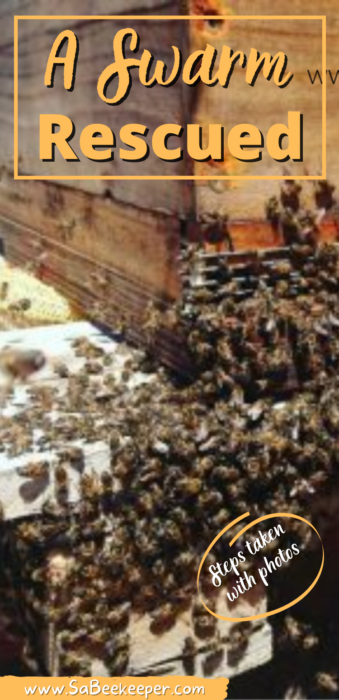
A Swarm Rescued
This little swarm was spotted at a workplace, hiding under planks. An empty hive was obtained from “The Beekeeper” and the swarm gently moved into the box. Queen guards placed on the entrance, as the queen will decide whether she wants to stay in the box provided or seek another site.
Info on queen bees
The box gives them shelter and provides frames with starter wax sheets for them to start building combs.
It will provide them with food and able the queen to lay eggs to expand the brood.
This particular swarm tried a few times to flee, but came back as the queen was still in the box.
The queen is bigger than the normal work bee so she can’t get out. They are quite fussy about boxes, maybe they were on their way to a site chosen for food by the scout bees.
The swarm is taken in the evening to a site suitable for them to forage food and to grow their brood.
We never take Honey from this brood box, as that is their store house.
Supers are placed on top of the box when they have completed all the combs inside and they are ready to build up the combs.
Swarm
Swarm arrived and hung under planks. Note how they protect the queen bee.
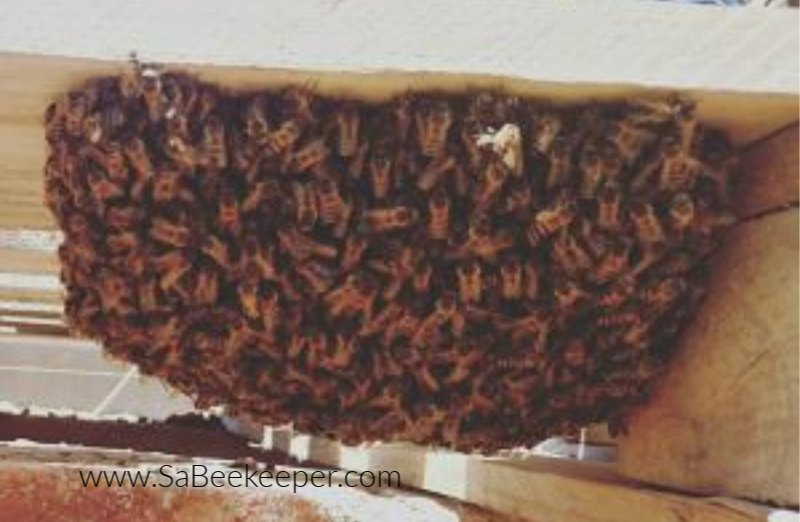
A box with bees flying and a queen guard on to protect queen from escaping. Although the normal bees can enter and exit easily. (photo below)
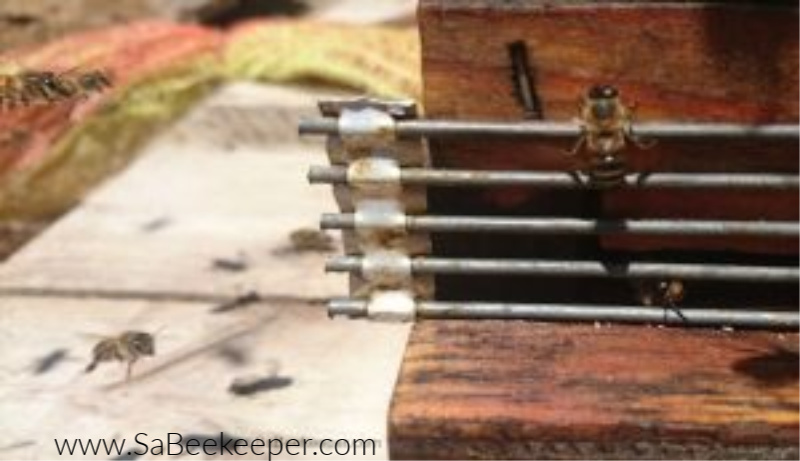
Once the queen bee is safely in the box the rest of the swarm filter in. Its like a quick march and nothing more satisfying to see.
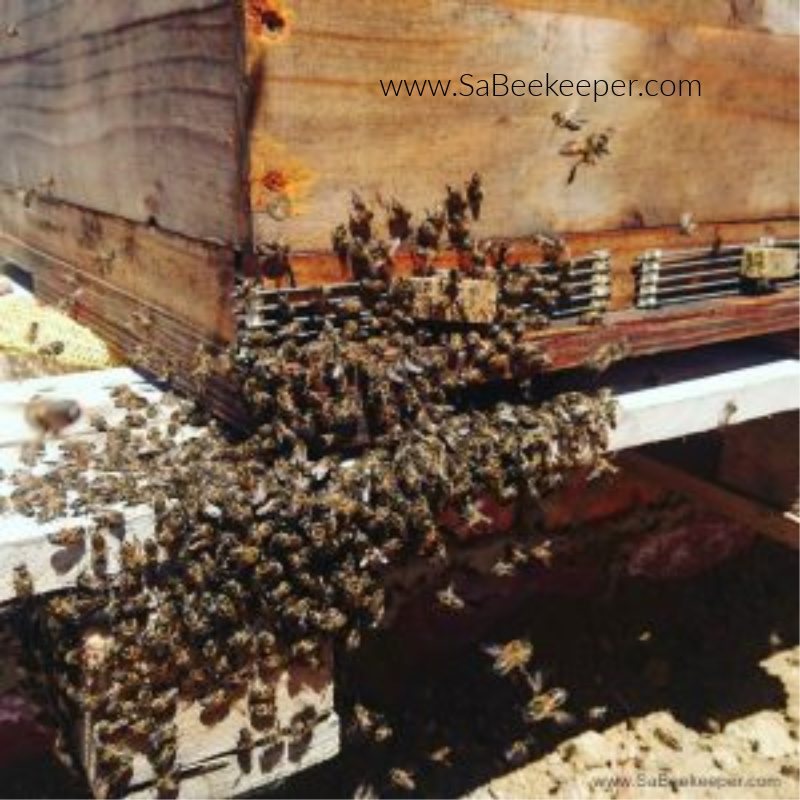
Note Bees filtering into the box, as they will never leave the queen. (Photo above)
Another rescue
One of the rescues was to go and remove a small swarm of bees that found a hiding place in the water meter boxes. In the street and pavements of the residential housing. (below photo)
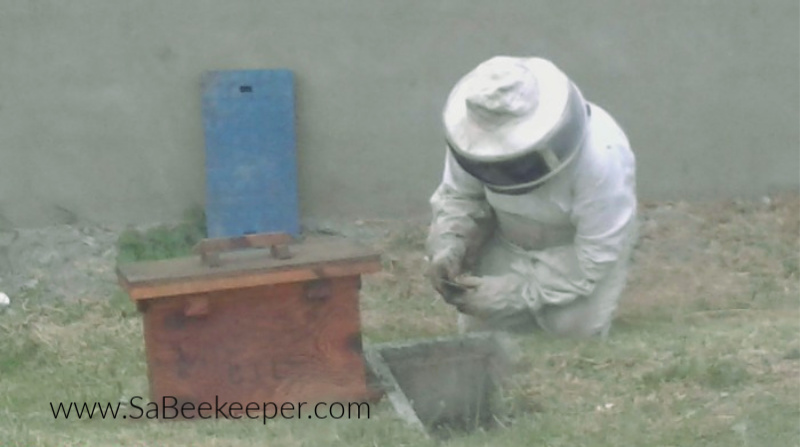
The Water meter reader can not read the water meter and the swarms get dangerous around houses. That was an opportunity to obtain a few more swarms.
A Beekeeper would open up the water meter lid. Place a catching box near entrance and try coax the bees into it or catch the queen bee. Then wait till nightfall for all the bees to enter the hive, as there would always be other bees out foraging food.
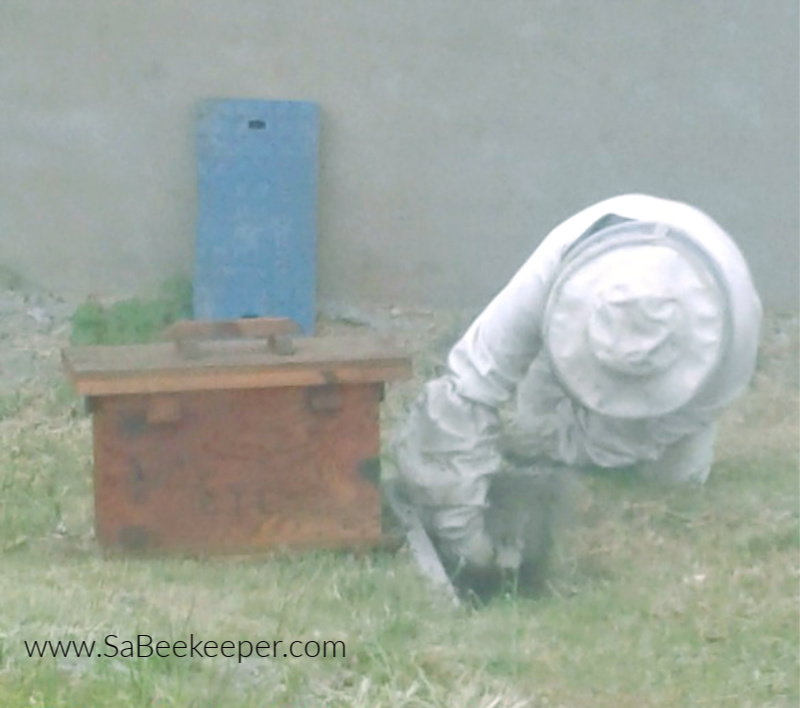
Night time is the best time to move a swarm as they would always all be in the hive.
Preparing to move box
The entrance of the box would be sealed and then taken to a place where they can obtain food and water. One would keep a watch to see how the swarm is progressing and eventually the swarm would be moved to a brood box.
It’s bigger and has 10 frames in, normally a catching box is smaller and has 4 to 6 frames.
Depending on the beekeepers preference. You need a smaller catching box as the bees also need to keep themselves warm.(if they are a small swarm)
Checking Catching box
The Beekeeper checking on a catching box. To see if the swarm has made it their home and to see if they have build wax combs. (photo below)
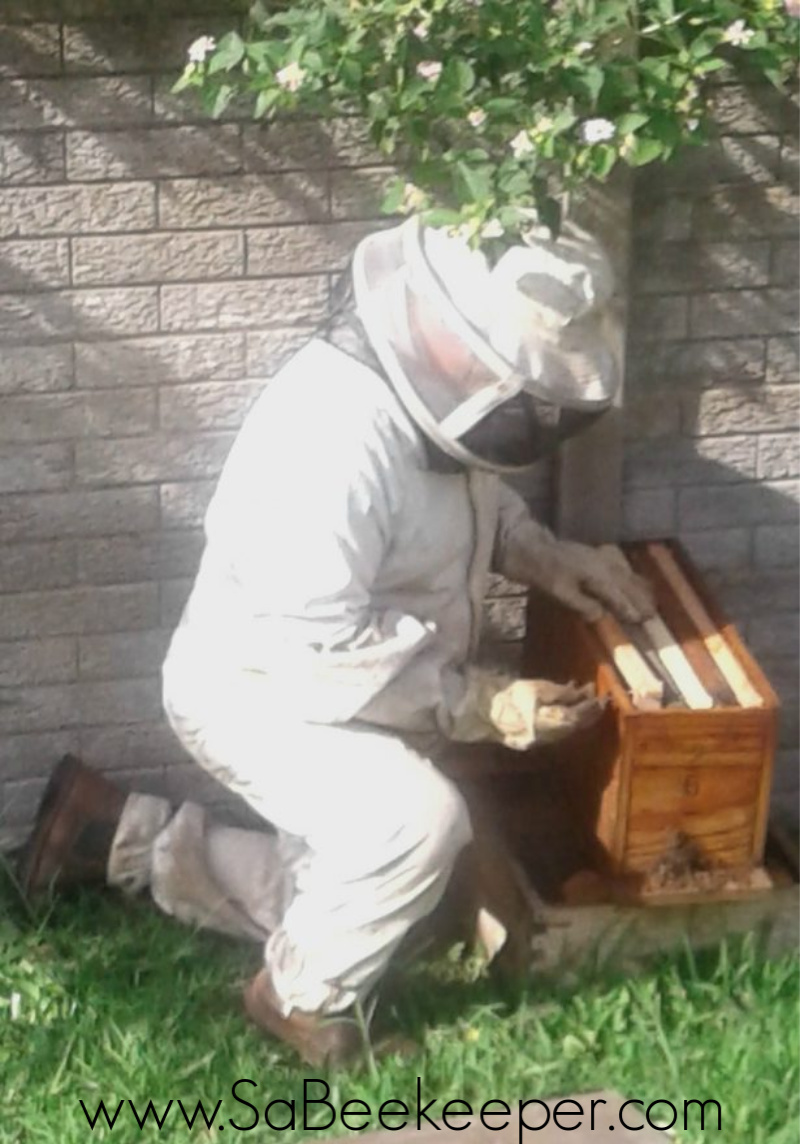
Sometimes they do not stay or you have misplaced the queen bee.
Read about another swarm rescue that was in Ecuador.
Leave a Reply